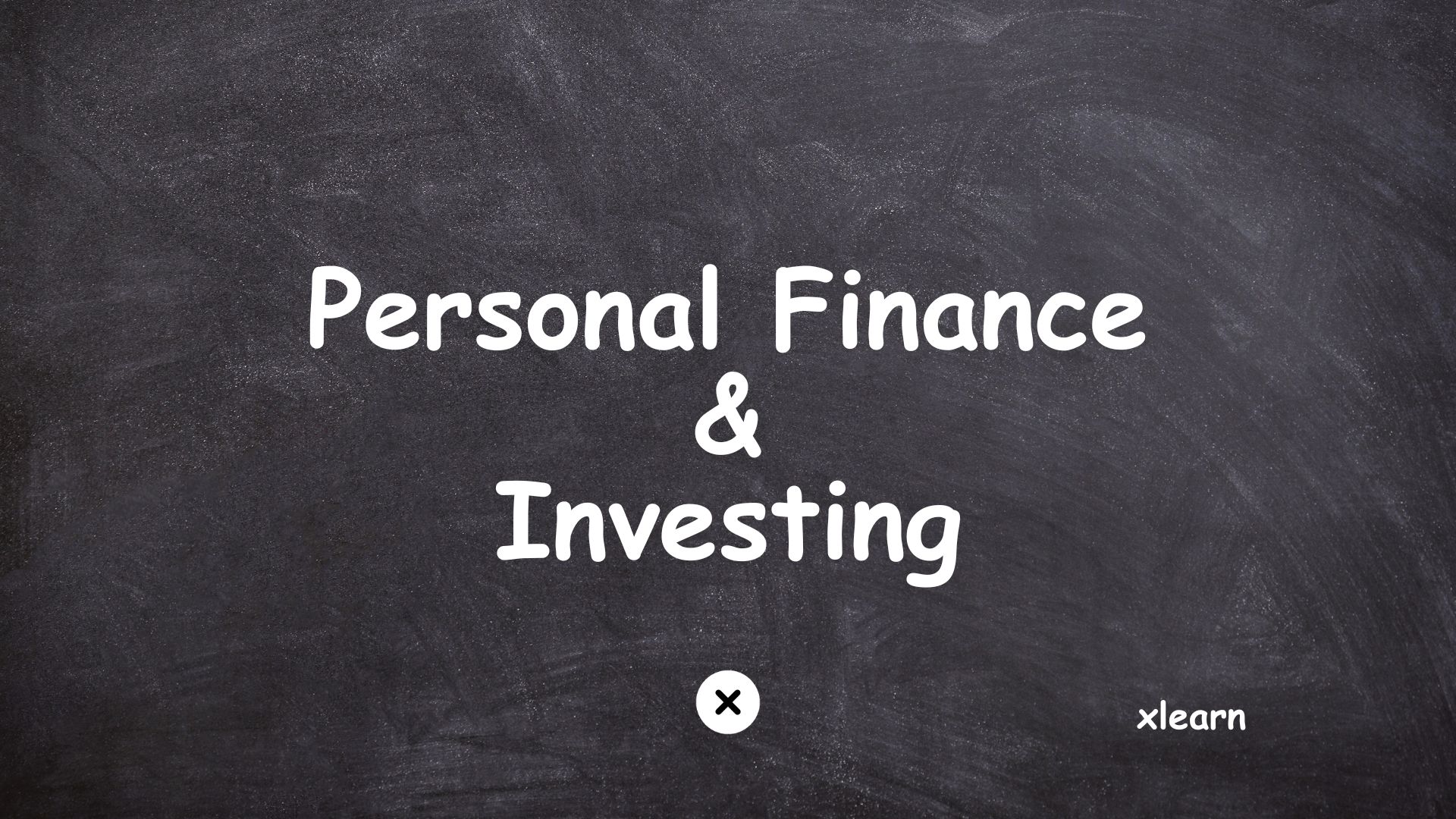
Personal finance is a critical aspect of our lives, influencing our ability to achieve goals, weather financial storms, and secure a comfortable future. It involves a range of activities from budgeting and saving to investing and retirement planning.
In this comprehensive guide, we will explore the key components of personal finance and provide practical tips to help you navigate the path to financial well-being.
1. Budgeting: Building a Strong Foundation
Budgeting is the cornerstone of effective personal finance. It involves tracking income, managing expenses, and creating a roadmap for financial success.
Income Tracking:
Identify all sources of income, including salary, bonuses, and side hustles. Having a clear picture of your cash flow is essential for effective financial planning.
Expense Management:
Categorize expenses into fixed (mortgage, rent) and variable (utilities, groceries) categories. Monitor discretionary spending to identify areas for potential savings.
Budget Creation:
Develop a realistic budget that allocates income to cover essential expenses, savings, and discretionary spending. Stick to your budget to build financial discipline.
2. Emergency Fund: Financial Safety Net
Establishing an emergency fund is crucial for weathering unexpected financial challenges. This fund provides a financial safety net in case of medical emergencies, job loss, or other unforeseen events.
Savings Goal:
Aim to save 3-6 months’ worth of living expenses. This fund should be easily accessible in a liquid account to ensure quick access during emergencies.
Regular Contributions:
Consistently contribute to your emergency fund, treating it as a non-negotiable part of your budget. Replenish any withdrawals promptly.
3. Debt Management: Breaking Free from Financial Shackles
High-interest debt can hinder financial progress. Prioritize debt repayment to free up resources for saving and investing.
Debt Assessment:
Identify high-interest debts, such as credit card balances, and prioritize repayment. Consider debt consolidation strategies to streamline payments.
Budgetary Adjustments:
Adjust your budget to allocate extra funds toward debt repayment. Create a realistic timeline for becoming debt-free.
4. Insurance: Protecting Your Financial Future
Insurance is a crucial component of personal finance, safeguarding against unforeseen events and providing peace of mind.
Coverage Evaluation:
Regularly assess your insurance coverage, including health, life, disability, and property insurance. Ensure that your coverage aligns with your current needs and circumstances.
Review Policies:
Periodically review and update insurance policies as life circumstances change. This ensures that your coverage remains relevant and adequate.
5. Retirement Planning: Securing Your Golden Years
Planning for retirement is an essential aspect of personal finance, ensuring financial security in your later years.
Contribute to Retirement Accounts:
Take advantage of employer-sponsored retirement plans, such as 401(k)s, and contribute regularly. Consider additional contributions to individual retirement accounts (IRAs).
Diversify Investments:
Diversify your retirement portfolio across various asset classes to mitigate risk. Regularly review and rebalance your portfolio to align with your risk tolerance and financial goals.
6. Investing: Growing Your Wealth
Investing allows your money to grow over time, helping you build wealth and achieve financial goals.
Understand Risk Tolerance:
Assess your risk tolerance before investing. Choose investments that align with your risk tolerance, financial goals, and time horizon.
Diversification:
Diversify your investment portfolio to spread risk. Consider a mix of stocks, bonds, and other assets to achieve a balanced and resilient portfolio.
Long-Term Perspective:
Approach investing with a long-term perspective. Avoid making impulsive decisions based on short-term market fluctuations.
Investing is something like magic for wealth building, let me explain,
We understand that investing is a long-term journey. Many folks pick a portfolio they like and regularly put in a bit of money over time. Some invest every week, and others do it monthly. When you invest a set amount each month, you’re spreading out the cost of the assets you’re buying. This technique is known as dollar cost averaging.
The monthly investment amount significantly influences your net worth over time. Let’s look at a example to illustrate the impact of dollar-cost averaging on a person’s net worth over a 30-year period, comparing monthly investments of $1,000 and $1,100 in a portfolio with a 10% annual return. let’s look at the impact of a $100 difference in investment on net worth.
You can use online calculators to do this calculation.
Scenario 1: Investing $1,000 per month:
- Monthly Investment: $1,000
- Annual Return: 10%
After 30 years of consistent monthly investments, the future value of the portfolio would be approximately $2,608,607.
Scenario 2: Investing $1,100 per month:
- Monthly Investment: $1,100
- Annual Return: 10%
After 30 years of investing $1,100 per month, the future value of the portfolio would be approximately $2,869,468.
Investing $1,100 per month results in a higher future portfolio value compared to investing $1,000 per month over a 30-year period. This example underscores how a slightly increased monthly contribution can have a significant impact on your net worth, especially when compounded over an extended period. The principle of dollar-cost averaging, with consistent and increased investments, plays a crucial role in building substantial wealth over time.
If you can cut down on spending and put a bit more into investing, you can grow your wealth. $100 might not seem like a lot; you can save $100 each week, and it can make a big difference. So, be mindful when spending extra money on luxuries if you haven’t developed a habit of investing.
7. Tax Planning: Maximizing Your Resources
Understanding the tax implications of financial decisions can help you optimize your resources and reduce tax liabilities.
Utilize Tax-Advantaged Accounts:
Take advantage of tax-advantaged accounts such as IRAs and 401(k)s. Understand the tax implications of different investments and financial decisions.
Stay Informed About Tax Changes:
Stay informed about changes in tax laws and regulations. Adjust your financial strategies accordingly to maximize tax benefits.
8. Estate Planning: Ensuring a Smooth Transition
Estate planning involves creating a plan for the distribution of assets and addressing key legal matters.
Create a Will:
Establish a will that clearly outlines how you want your assets distributed. Regularly update your will as circumstances change.
Powers of Attorney and Healthcare Directives:
Consider creating powers of attorney and healthcare directives to ensure your wishes are followed in case of incapacity.
9. Financial Goals: Setting the Course for Success
Setting clear financial goals provides direction and purpose to your financial decisions.
Short-Term and Long-Term Goals:
Define both short-term and long-term financial goals, such as buying a home, funding education, or retiring comfortably.
Actionable Steps:
Break down large goals into smaller, actionable steps. Create a timeline and allocate resources to achieve these milestones.
10. Continuous Learning: Empowering Yourself Financially
Staying informed about personal finance topics and investment options is crucial for making informed decisions.
Read and Educate Yourself:
Invest time in reading reputable financial publications, books, and online resources. Attend financial seminars or workshops to enhance your knowledge. watching yahoo finance also really helps.
Seek Professional Advice:
Consider consulting with a financial advisor to get personalized advice based on your unique situation and goals.
11. Monitoring and Adjusting: A Dynamic Process
Personal finance is a dynamic process that requires regular monitoring and adjustments.
Regular Reviews:
Periodically review your budget, investments, and overall financial plan. Make adjustments as needed to align with changing circumstances.
Adapt to Life Changes:
Be flexible and adapt your financial strategies to major life changes, such as marriage, having children, or career advancements.
Conclusion
Mastering personal finance is an ongoing journey that involves discipline, education, and adaptability. By implementing these principles and consistently making informed financial decisions, you can build a solid foundation for financial well-being, achieve your goals, and secure a comfortable future.
Mint is a popular personal finance website and mobile app that offers tools for budgeting, expense tracking, and financial goal setting. It allows users to link their bank accounts, credit cards, and other financial accounts to provide a comprehensive overview of their financial situation.
Mint automatically categorizes transactions, provides spending insights, and helps users create and stick to budgets. Additionally, it offers credit score monitoring and alerts for unusual account activity, providing a holistic approach to managing and improving financial well-being.
Remember that every financial decision you make today has a lasting impact on your financial tomorrow.



